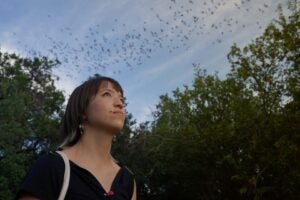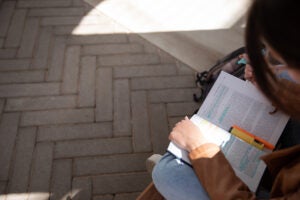AUSTIN, Texas — Defects in the chemical makeup of conjugated polymers are important keys to the way they function, according to a research team at The University of Texas at AustinÌs department of chemistry and biochemistry. Their research is being published in the June 29 issue of the British scientific journal Nature. The material has potential commercial uses in polymer-based semiconductors or lasers for use in fabricating electronics and light emitting devices such as TV or computer screens.
The UT Austin team includes Dr. Paul F. Barbara, the Richard J.V. Johnson-Welch Regents Chair in Chemistry; Dr. Peter J. Rossky, the George H. Watt Centennial Professor in Chemistry; Dr. Dehong Hu, a postdoctoral fellow in the department of chemistry and biochemistry; and graduate students Ji Yu and Kim Wong from the department of chemistry and biochemistry. Biman Bagchi of the Indian Institute of Science in Bangalore, a visiting professor at the UT Austin Institute for Theoretical Chemistry and the UT Austin Laboratory for Spectroscopic Imaging, also participated in the research.
Rossky said understanding the way the polymer is folded is crucial to understanding the behavior of the polymer in terms of its light emitting properties and light absorbing properties, as well as its physical properties, such as strength and flexibility. Rossky said the most significant discoveries made by the researchers were that folded cylindrical structures exist in real samples of the polymer in question and that these polymers fold up in this way because of the existence of defects in the chemistry compared to the idealized molecular structure usually assumed for the material.
Researchers used a combination of theory and experiment to reach their conclusions. They based their results on a combination of computer simulations of molecular polymer models and direct measurements of the way fluorescent light emerges from individual polymer molecules. Including chemical imperfections in the structure of the computer models was the key factor needed to bring theory and experiment into agreement, Rossky said.
For more information, contact Dr. Peter Rossky at (512) 471-3555 or Dr. Paul F. Barbara at (512) 471-2053.



